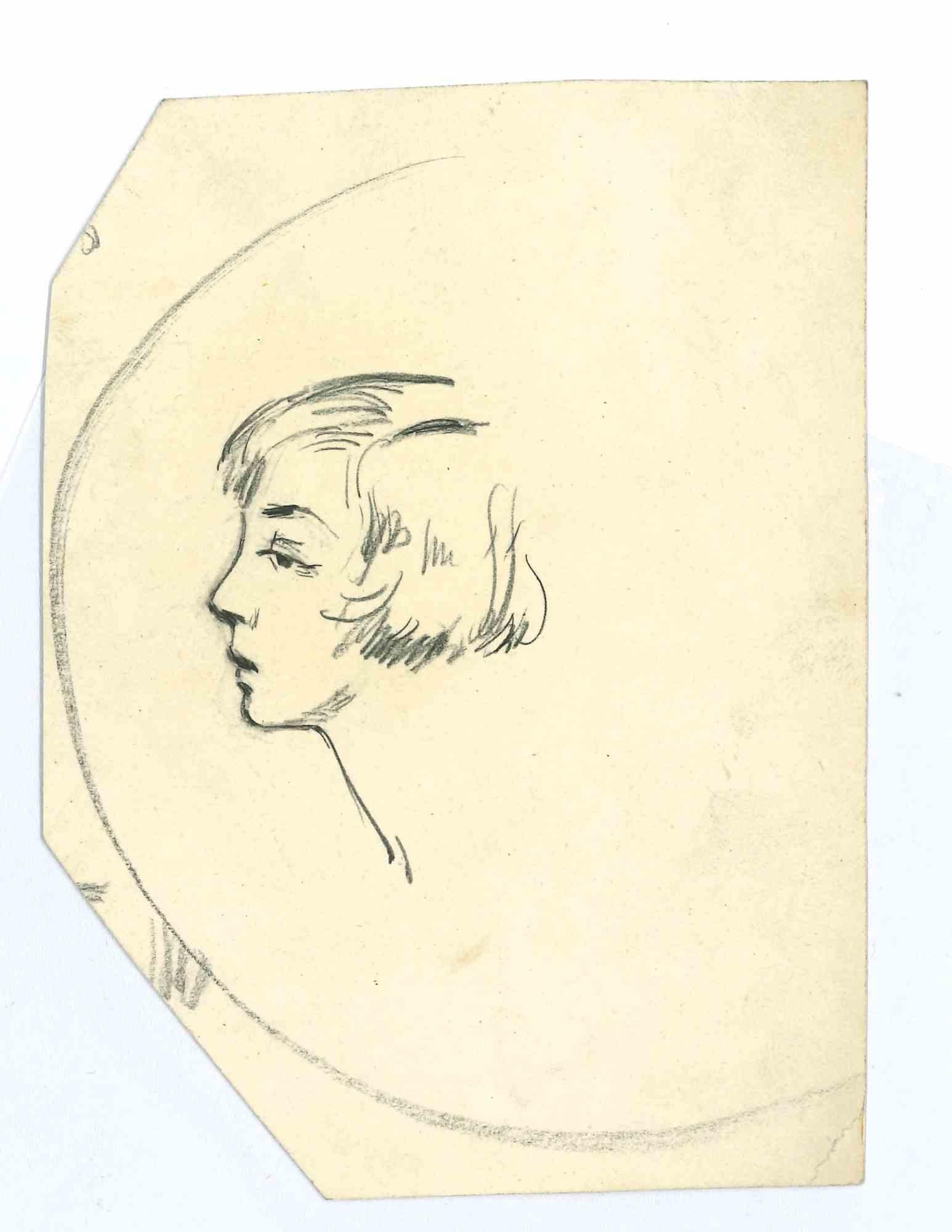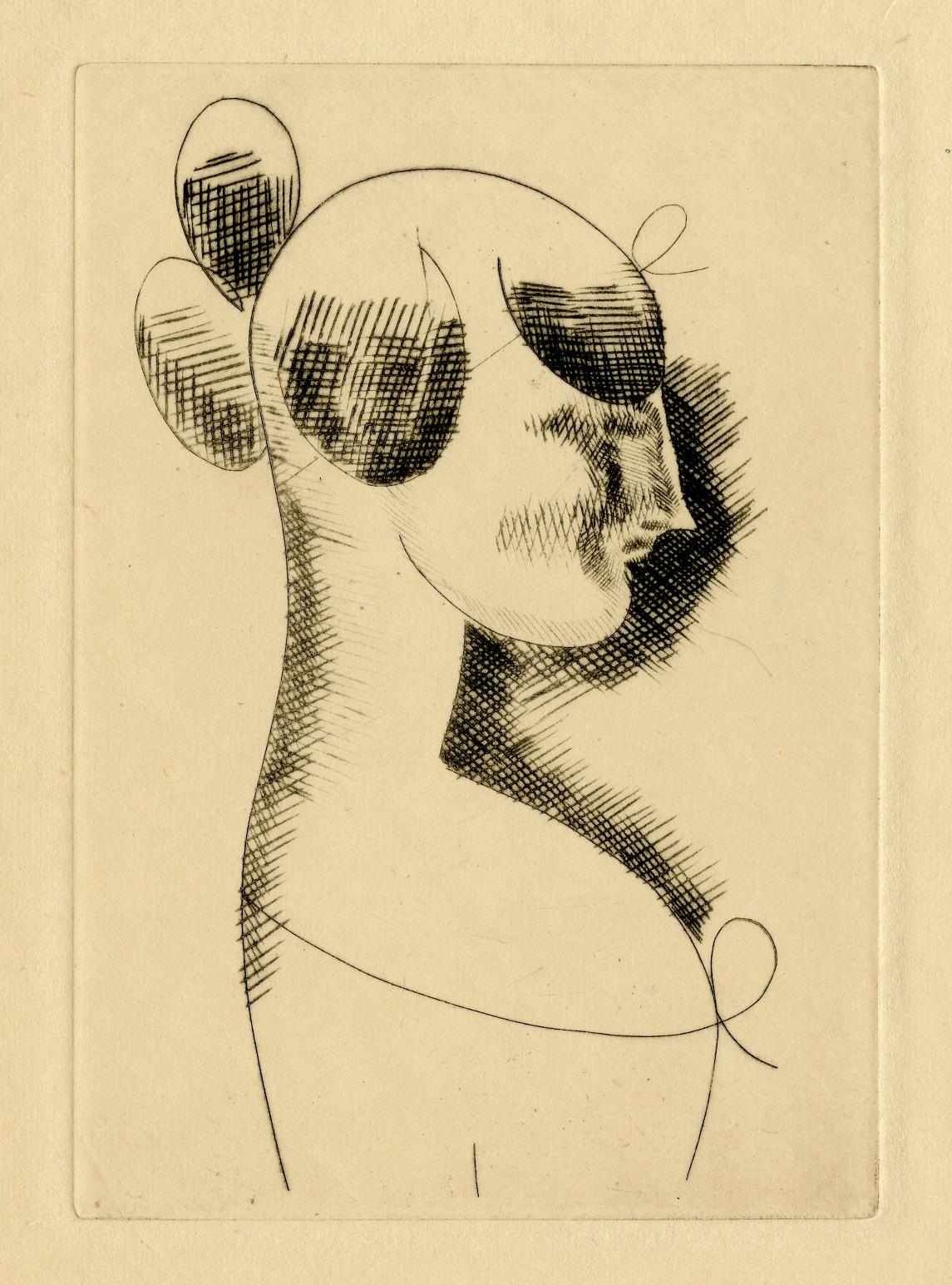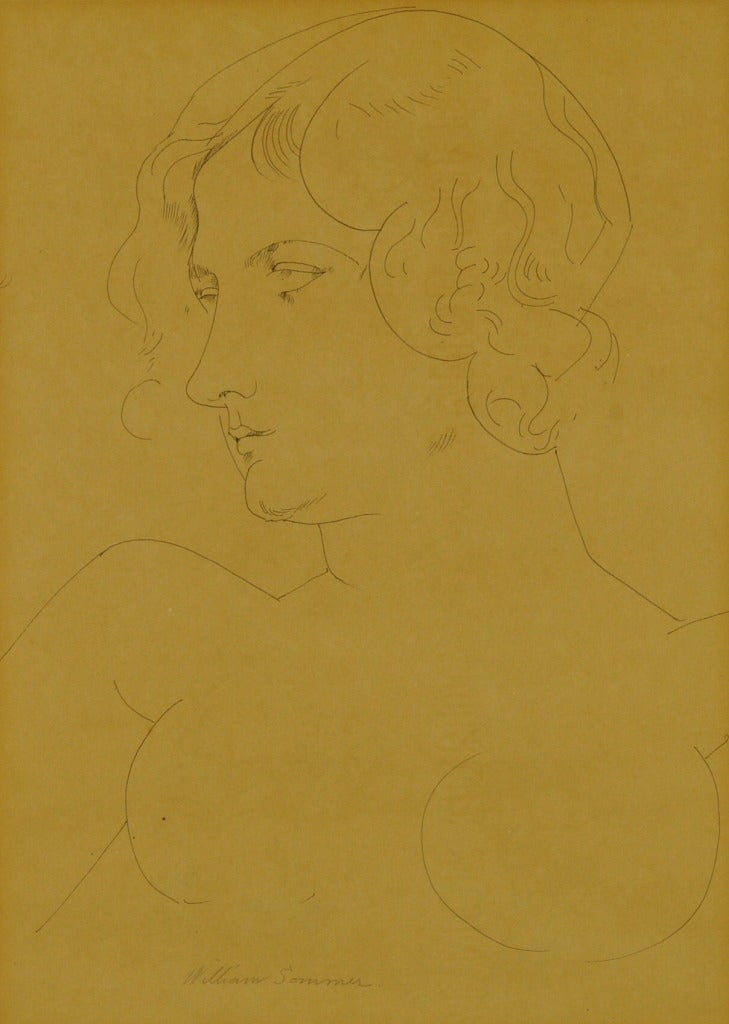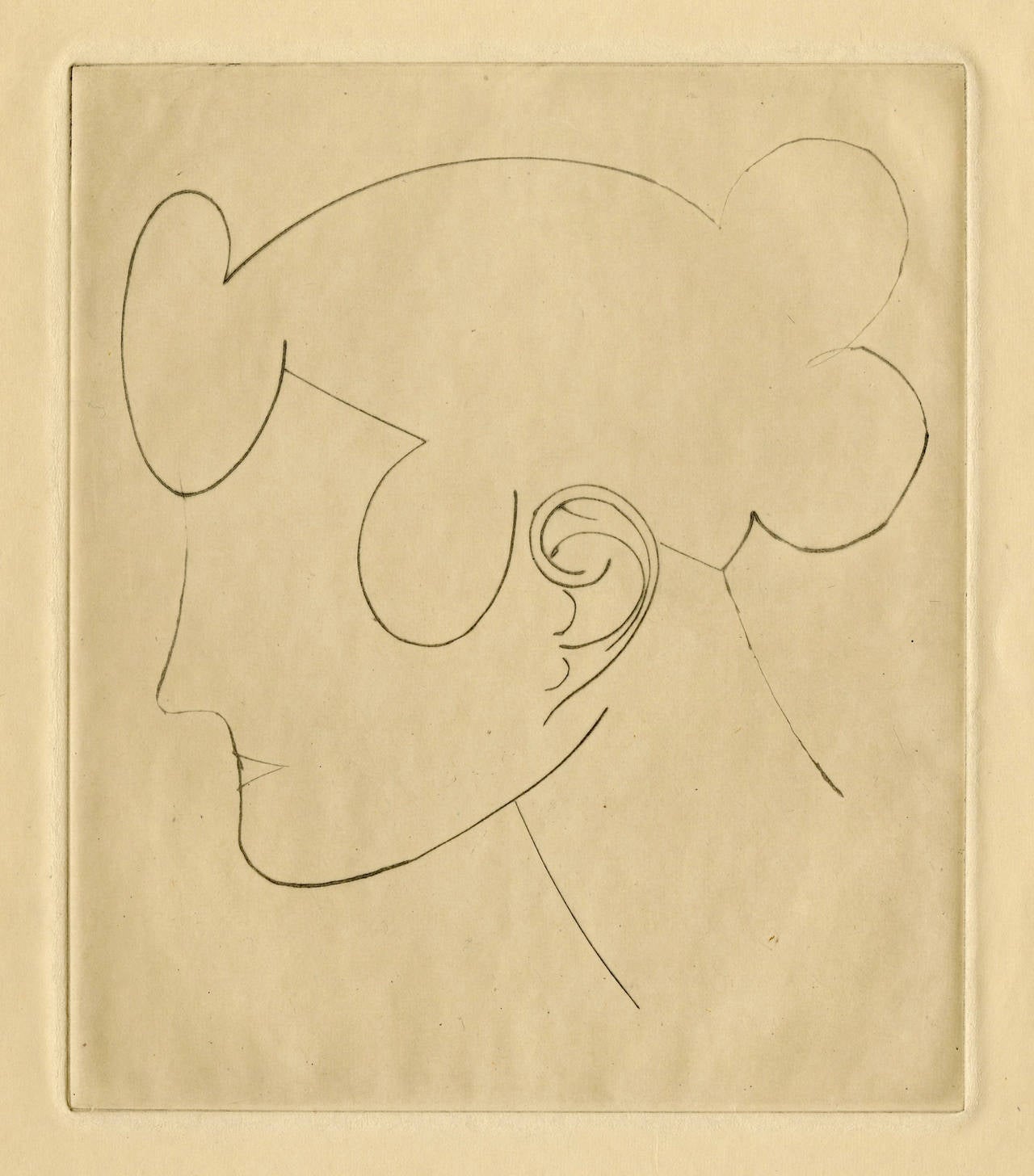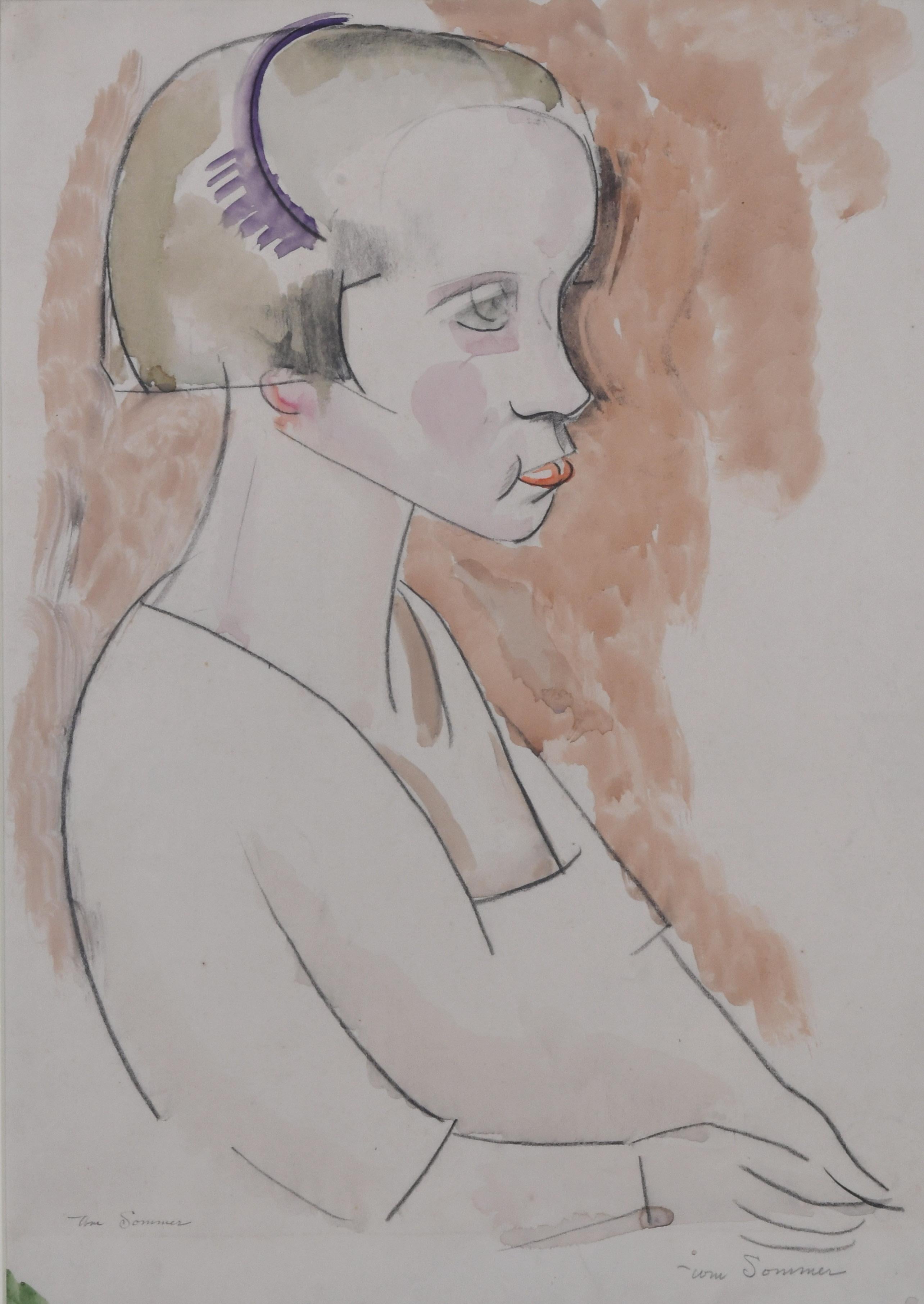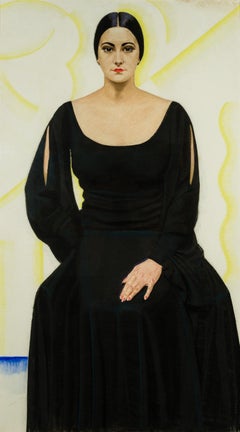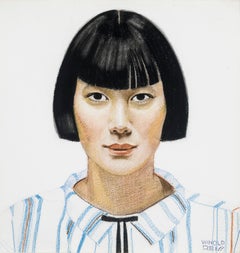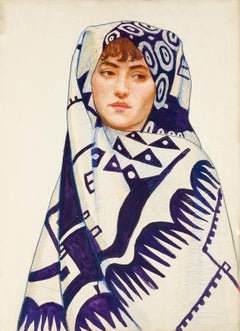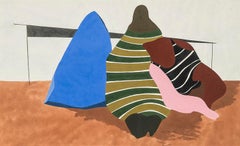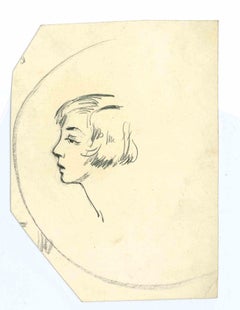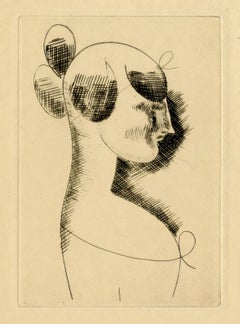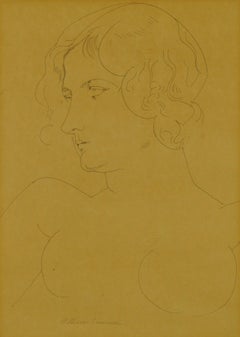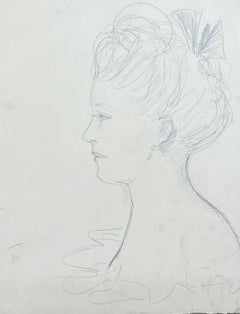Items Similar to Profile of a Woman
Want more images or videos?
Request additional images or videos from the seller
1 of 2
Elie NadelmanProfile of a Woman1921
1921
$16,000
£12,084.42
€13,966.02
CA$22,442.45
A$24,958.18
CHF 13,064.45
MX$304,459.39
NOK 164,159.62
SEK 154,413.31
DKK 104,247.26
About the Item
Pencil on paper
- Creator:Elie Nadelman (1885-1946, Polish)
- Creation Year:1921
- Dimensions:Height: 10.25 in (26.04 cm)Width: 7.9 in (20.07 cm)Depth: 1.5 in (3.81 cm)
- Medium:
- Movement & Style:
- Period:
- Condition:
- Gallery Location:New York, NY
- Reference Number:Seller: APG 47161stDibs: LU236863772
About the Seller
5.0
Recognized Seller
These prestigious sellers are industry leaders and represent the highest echelon for item quality and design.
Established in 1952
1stDibs seller since 2010
35 sales on 1stDibs
Typical response time: 3 hours
Associations
Art Dealers Association of America
- ShippingRetrieving quote...Shipping from: New York, NY
- Return Policy
Authenticity Guarantee
In the unlikely event there’s an issue with an item’s authenticity, contact us within 1 year for a full refund. DetailsMoney-Back Guarantee
If your item is not as described, is damaged in transit, or does not arrive, contact us within 7 days for a full refund. Details24-Hour Cancellation
You have a 24-hour grace period in which to reconsider your purchase, with no questions asked.Vetted Professional Sellers
Our world-class sellers must adhere to strict standards for service and quality, maintaining the integrity of our listings.Price-Match Guarantee
If you find that a seller listed the same item for a lower price elsewhere, we’ll match it.Trusted Global Delivery
Our best-in-class carrier network provides specialized shipping options worldwide, including custom delivery.More From This Seller
View AllRosalee Sondheimer I
By Winold Reiss
Located in New York, NY
Winold Reiss (1886-1953), who scholars increasingly recognize as a pivotal figure in early 20th-century American art, is known for his evocative portraits that capture the spirit and...
Category
20th Century American Modern Portrait Drawings and Watercolors
Materials
Pastel, Board
Japanese Girl
By Winold Reiss
Located in New York, NY
Signed (at lower right): WINOLD/REISS
Category
20th Century American Modern Portrait Drawings and Watercolors
Materials
Pastel
Price Upon Request
Girl in Decorative Wrap
By Winold Reiss
Located in New York, NY
Winold Reiss (1886-1953), who scholars increasingly recognize as a pivotal figure in early 20th-century American art, is known for his evocative portraits that capture the spirit and...
Category
20th Century American Modern Portrait Drawings and Watercolors
Materials
Mixed Media, Board
Untitled
By Charles Houghton Howard
Located in New York, NY
Charles Houghton Howard was born in Montclair, New Jersey, the third of five children in a cultured and educated family with roots going back to the Massachusetts Bay colony. His father, John Galen Howard, was an architect who had trained at M.I.T. and the École des Beaux-Arts in Paris and apprenticed in Boston with Henry Hobson Richardson. In New York, the elder Howard worked for McKim, Mead and White before establishing a successful private practice. Mary Robertson Bradbury Howard, Charles’s mother, had studied art before her marriage. John Galen Howard moved his household to California in 1902 to assume the position of supervising architect of the new University of California campus at Berkeley and to serve as Professor of Architecture and the first Dean of the School of Architecture (established in 1903). The four Howard boys grew up to be artists and all married artists, leaving a combined family legacy of art making in the San Francisco Bay area that endures to this day, most notably in design, murals, and reliefs at the Coit Tower and in buildings on the Berkeley campus.
Charles Howard graduated from the University of California at Berkeley in 1921 as a journalism major and pursued graduate studies in English at Harvard and Columbia Universities before embarking on a two-year trip to Europe. Howard went to Europe as a would-be writer. But a near-religious experience, seeing a picture by Giorgione in a remote town outside of Venice, proved a life-altering epiphany. In his own words, “I cut the tour at once and hurried immediately back to Paris, to begin painting. I have been painting whenever I could ever since” (Charles Howard, “What Concerns Me,” Magazine of Art 39 [February 1946], p. 63). Giorgione’s achievement, in utilizing a structured and rational visual language of art to convey high emotion on canvas, instantly convinced Howard that painting, and not literature, offered the best vehicle to express what he wanted to say. Howard returned to the United States in 1925, confirmed in his intent to become an artist.
Howard settled in New York and supported himself as a painter in the decorating workshop of Louis Bouché and Rudolph Guertler, where he specialized in mural painting. Devoting spare time to his own work, he lived in Greenwich Village and immersed himself in the downtown avant-garde cultural milieu. The late 1920s and early 1930s were the years of Howard’s art apprenticeship. He never pursued formal art instruction, but his keen eye, depth of feeling, and intense commitment to the process of art making, allowed him to assimilate elements of painting intuitively from the wide variety of art that interested him. He found inspiration in the modernist movements of the day, both for their adherence to abstract formal qualities and for the cosmopolitan, international nature of the movements themselves. Influenced deeply by Surrealism, Howard was part of a group of American and European Surrealists clustered around Julien Levy. Levy opened his eponymously-named gallery in 1931, and rose to fame in January 1932, when he organized and hosted Surrealisme, the first ever exhibition of Surrealism in America, which included one work by Howard. Levy remained the preeminent force in advocating for Surrealism in America until he closed his gallery in 1949. Howard’s association with Levy in the early 1930s confirms the artist’s place among the avant-garde community in New York at that time.
In 1933, Howard left New York for London. It is likely that among the factors that led to the move were Howard’s desire to be a part of an international art community, as well as his marriage to English artist, Madge Knight...
Category
20th Century American Modern Abstract Drawings and Watercolors
Materials
Paper, Watercolor, Gouache, Graphite
A late frost drifted back
By Angela Fraleigh
Located in New York, NY
Signed on back
Category
2010s Contemporary Figurative Paintings
Materials
Linen, Oil
Seated Woman (Elizabeth)
By Franz Kline
Located in New York, NY
EX COLL.: the artist; to I. David Orr (1904–1997), Long Island, New York; to his estate, 1997 until the present
Originally trained as a figurative painter, Kline was an exceptional ...
Category
Mid-20th Century Abstract Expressionist Portrait Drawings and Watercolors
Materials
Pastel, Paper, Ink
You May Also Like
The Profile of Woman - Original Drawing by Micheline Resco - Mid 20th Century
Located in Roma, IT
The Profile of Woman is an Original Drawing in pencil on creamy-colored paper realized by Micheline Resco in the mid-20th century.
Good conditions.
...
Category
Mid-20th Century Modern Figurative Drawings and Watercolors
Materials
Pencil
Profile Bust of a Girl - Woman's Head in Profile (Havard)
By Elie Nadelman
Located in Fairlawn, OH
Profile Bust of a Girl - Woman's Head in Profile (Havard)
Drypoint, 1920
Unsigned (as issued)
From: The Drypoints of Elie Nadelman, 21 unpublished prints by the sculptor, proof from ...
Category
1920s American Modern Figurative Prints
Materials
Drypoint
Female Nude in Profile
By William Sommer
Located in Fairlawn, OH
Woman
Pen and ink on paper, c. 1925-1928
Signed in pencil lower left
Exhibited: Akron Art Institute (Akron Art Museum),
William Sommer Retrospective, Oct. 25 to Nov. 29,
1 970
Illu...
Category
1920s American Modern Drawings and Watercolor Paintings
Materials
Ink
Mid Century French Side Profile Portrait of a Lady with a Vintage Hairstyle
By Josine Vignon
Located in Cirencester, Gloucestershire
Mid Century French Portrait
Josine Vignon (French 1922-2022)
Medium: Pencil/ charcoal on artists paper, double sided
Size: 13 (height) x 10 (width)
Stamped Verso
Condition: Good
Pr...
Category
Mid-20th Century Post-Impressionist Figurative Paintings
Materials
Charcoal, Pencil
Woman's Head - Woman's Head in Profile (left) (Havard)
By Elie Nadelman
Located in Fairlawn, OH
Woman's Head - Woman's Head in Profile (left) (Havard)
Drypoint, 1920
Unsigned (as issued)
From: The Drypoints of Elie Nadelman, 21 unpublished prints by the sculptor, proof from th...
Category
1920s American Modern Portrait Prints
Materials
Drypoint
Girl in Profile
By William Sommer
Located in Fairlawn, OH
Girl in Profile
Lithographic crayon and watercolor on thin wove paper, c. 1930
Signed twice in pencil (see photos)
Provenance: Estate of the Artist
Edward Somme...
Category
1930s American Modern Figurative Drawings and Watercolors
Materials
Watercolor
More Ways To Browse
Profile Woman Painting
American 19th Century Watercolors
Pen And Ink French
Native American Pastels
Mid Century Sketch Pencil
Watercolor On Silk
Fish Watercolor
Pencil Drawings Of Flowers
Black Ink Line Drawing
Antique Drawing Board
Pencil Geometric Drawing
Watercolour Painting Of Cat
Antique Ink Stamps
Cottage Watercolours
Line Drawing Nude
Nude Line Drawings
Trains Pencil Drawing
Framed Drawing Nude Woman
